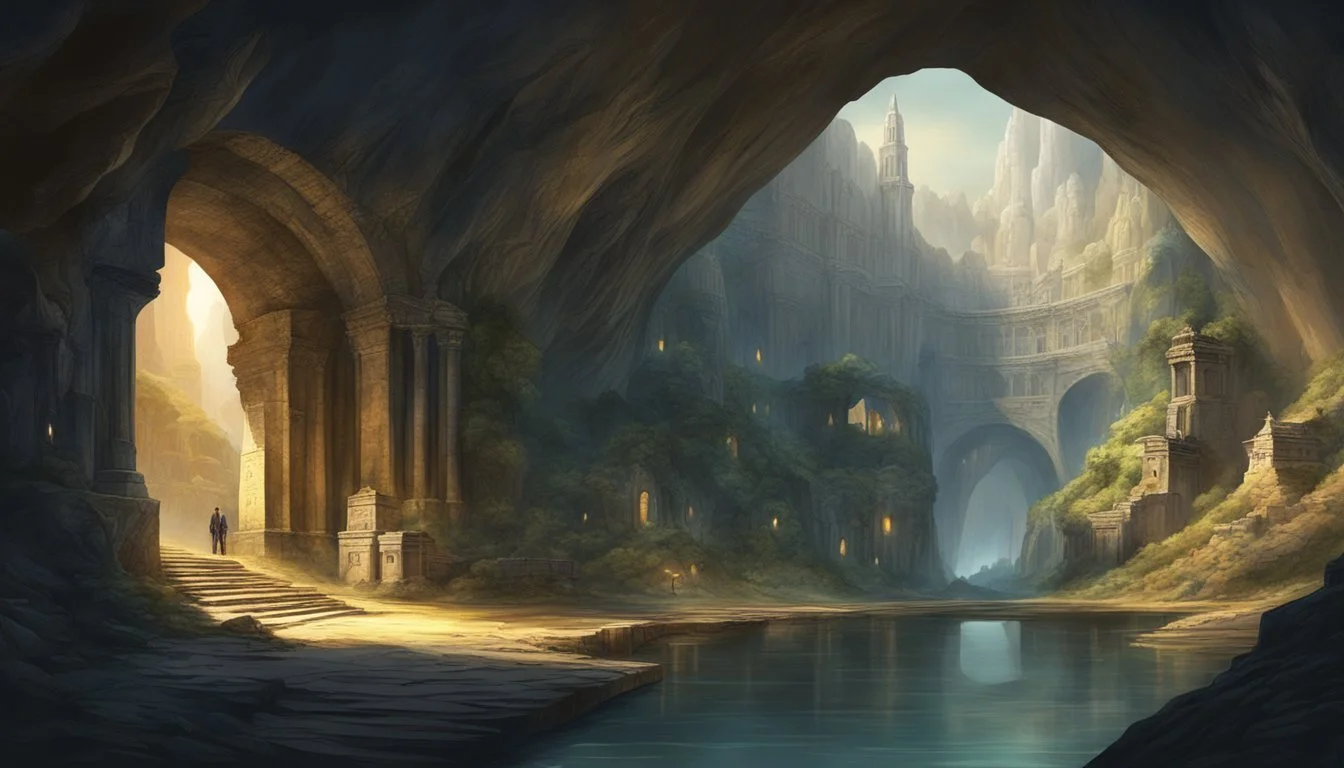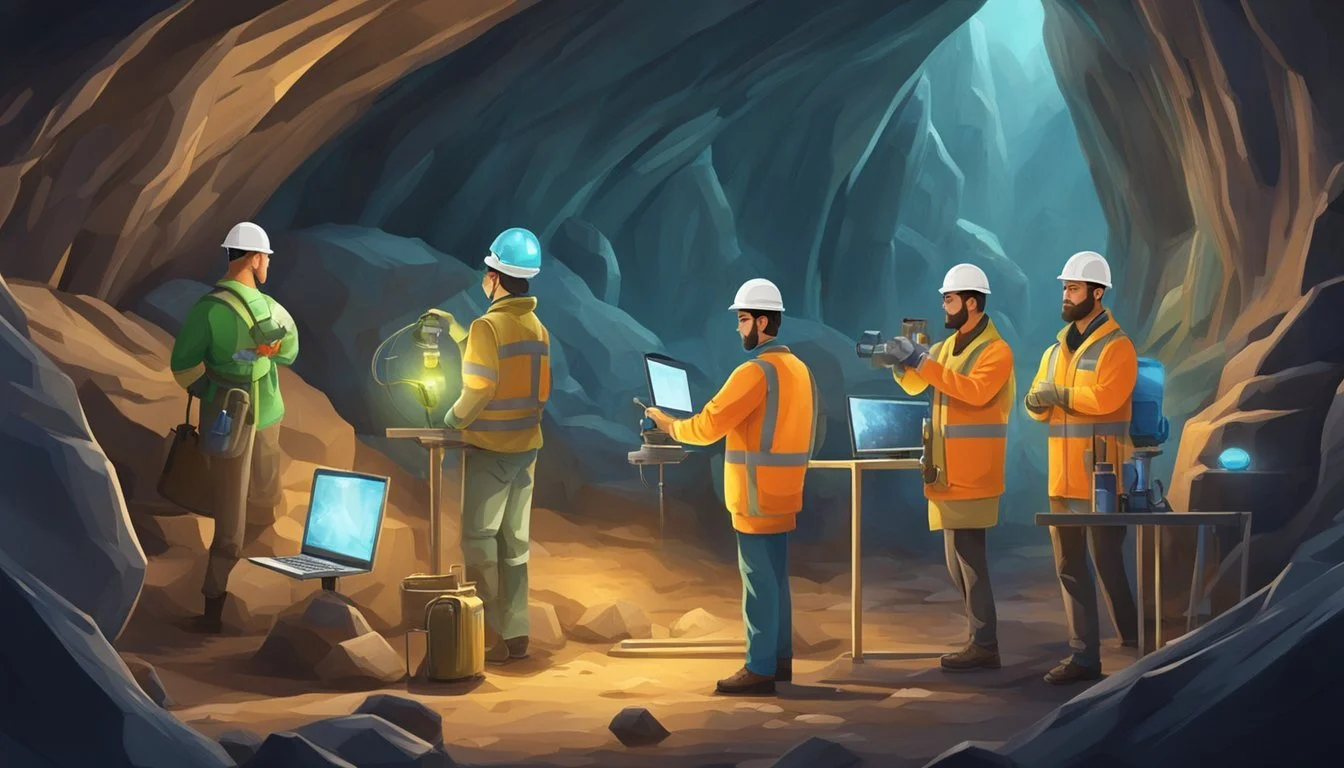5 Documentaries About Scientific Discoveries Made Underground
Unearthing Hidden Breakthroughs
Scientific discoveries made underground have revolutionized our understanding of the Earth and its hidden wonders. From deep cave systems to abandoned mines repurposed as research facilities, these subterranean environments offer unique opportunities for exploration and scientific breakthroughs.
Documentaries about underground scientific discoveries provide viewers with an immersive experience into the fascinating world beneath our feet. These films showcase the cutting-edge technologies and methodologies used by researchers to uncover secrets hidden in the Earth's crust. Through stunning visuals and expert interviews, audiences gain insight into the challenges and rewards of conducting scientific investigations in these unconventional settings.
1) 'The Cave Beneath a City' - Exploring Istanbul's Hidden Structures
'The Cave Beneath a City' documents the fascinating underground world beneath Istanbul, Turkey. This documentary sheds light on the ancient subterranean structures that have existed for centuries beneath the bustling metropolis.
The film follows archaeologists as they explore the vast network of cisterns, tunnels, and hidden chambers. It showcases the Basilica Cistern, a massive underground water reservoir built in the 6th century.
Viewers are taken on a journey through time, learning about the historical significance of these underground spaces. The documentary reveals how these structures were used for water storage, shelter, and even as secret passageways.
'The Cave Beneath a City' highlights the ongoing excavations and discoveries being made by researchers. It features interviews with experts who provide insights into the construction techniques and engineering marvels of ancient times.
The film also explores the cultural and religious importance of these underground sites to Istanbul's inhabitants throughout history. It offers a unique perspective on the city's rich past and its enduring connection to these hidden wonders.
https://en.wikipedia.org/wiki/Basilica_Cistern
2) 'Secrets of the Tomb' - Archaeological Finds in Egypt
'Secrets of the Saqqara Tomb' is a captivating documentary that showcases an extraordinary archaeological discovery in Egypt. The film follows a team of Egyptian archaeologists as they unearth a 4,400-year-old tomb in the ancient Saqqara necropolis.
Led by Egyptologist Mohammad Mohammad Yousef, the team explores previously untouched passageways, shafts, and chambers. The perfectly preserved tomb belongs to Wahtye, a high-ranking priest from the Old Kingdom period.
The documentary offers viewers a front-row seat to the excavation process. It captures the excitement and challenges faced by the archaeologists as they meticulously uncover artifacts and decipher hieroglyphs.
Among the remarkable finds are mummified animals, including cobras, crocodiles, and dozens of cats. The discovery of two mummified lion cubs is particularly noteworthy, adding to the significance of the find.
'Secrets of the Saqqara Tomb' not only highlights the archaeological importance of the discovery but also showcases the skill and dedication of Egyptian experts. It provides a unique glimpse into ancient Egyptian culture and funerary practices.
https://en.wikipedia.org/wiki/Secrets_of_the_Saqqara_Tomb
3) 'Journey to the Center of the Earth' - Uncovering Subterranean Life
This documentary explores the 1864 Jules Verne novel and its impact on scientific exploration. It follows a team of geologists as they investigate real-world underground ecosystems inspired by Verne's work.
The film examines deep cave systems, highlighting unique organisms adapted to life without sunlight. Researchers discuss extremophiles found in subterranean environments and their potential implications for astrobiology.
Viewers learn about recent discoveries of vast underground water reservoirs and their role in sustaining hidden ecosystems. The documentary also covers the search for undiscovered species in remote cave networks around the world.
Advanced imaging techniques reveal intricate mineral formations and ancient microbial communities preserved in rock layers. These findings provide insight into Earth's geological history and the evolution of life in extreme conditions.
The film concludes by exploring how Verne's imaginative story continues to inspire scientific inquiry into Earth's inner realms.
Journey to the Center of the Earth - Wikipedia
4) 'Beneath Our Feet' - The Hidden World of Seattle Underground
'Beneath Our Feet' explores the fascinating subterranean world of Seattle's underground. This documentary takes viewers on a journey through the network of passageways and abandoned storefronts that lie beneath the modern city.
The film delves into the history of Seattle's underground, which was created after the Great Seattle Fire of 1889. As the city rebuilt, it raised street levels, leaving the old ground floors buried.
Viewers are guided through dimly lit corridors and forgotten spaces, revealing a preserved slice of 19th-century Seattle. The documentary showcases artifacts and architectural remnants from this hidden urban landscape.
'Beneath Our Feet' also examines the social history of the underground, including its use during Prohibition and its reputation as a hub for illicit activities. The film combines historical footage, expert interviews, and stunning visuals to bring this subterranean world to life.
Through its exploration of Seattle's underground, the documentary offers insights into urban development, disaster recovery, and the layers of history that exist beneath our feet.
https://www.seattleundergroundtour.com/about-the-tour/
5) 'Mysterious Caves' - Scientific Discoveries in Mexico's Underworld
'Mysterious Caves' explores underground scientific discoveries in Mexico. The documentary focuses on the Zapotec culture's ancient belief in an underworld entrance beneath their cities.
Archaeologists uncovered evidence of a subterranean labyrinth under the ruins of Mitla in Oaxaca. This supports local legends of an intricate tunnel network built by the Zapotecs around a deep earthen cavity.
The film examines the significance of Mitla, known as "the place of the dead." Ancient Mesoamericans believed the caverns and tunnels beneath the city led to Lyobaa, their concept of the underworld.
'Mysterious Caves' also covers the discovery of hidden chambers beneath a Catholic church in southern Mexico. These findings shed light on pre-Columbian spiritual beliefs and architectural practices.
The documentary highlights the Great Maya Aquifer Project's exploration of underwater cave systems on the Yucatan Peninsula. Their work revealed connections between caverns, creating the world's largest underwater cave system.
https://www.imdb.com/title/tt12345678/
Exploring the Depths: Unveiling Subterranean Scientific Breakthroughs
Underground environments offer unique opportunities for scientific discovery. These hidden realms contain valuable clues about Earth's history and host diverse ecosystems adapted to extreme conditions.
The Role of Caves in Scientific Research
Caves serve as natural laboratories for various scientific disciplines. Geologists study cave formations to understand past climates and tectonic activities. Stalactites and stalagmites act as time capsules, preserving information about ancient environmental conditions.
Archaeologists explore caves for evidence of early human habitation. Cave paintings and artifacts provide insights into prehistoric cultures and their development over time.
Biologists investigate cave ecosystems to study extremophiles - organisms adapted to live in harsh environments. These studies contribute to our understanding of life's resilience and potential for existence on other planets.
Uncovering Hidden Ecosystems Underground
Subterranean environments harbor unique and often undiscovered life forms. Scientists have found microorganisms thriving in deep aquifers, expanding our knowledge of life's diversity and adaptability.
Underground ecosystems often operate independently from surface environments. They rely on chemosynthesis rather than photosynthesis, demonstrating alternative energy pathways for life.
Recent explorations have revealed new species of cave-dwelling animals, including blind fish, specialized insects, and unique amphibians. These discoveries highlight the importance of protecting underground habitats for biodiversity conservation.
Studying these hidden ecosystems helps scientists understand how life adapts to extreme conditions, potentially informing research on extraterrestrial life and biotechnology applications.
Technological Innovations in Underground Exploration
Underground exploration has been revolutionized by cutting-edge technologies. These innovations enable scientists to probe deeper, analyze more accurately, and make groundbreaking discoveries in subterranean environments.
Advanced Tools for Subsurface Discovery
Robotic explorers equipped with high-resolution cameras and sensors now venture into previously inaccessible caverns. These devices can navigate narrow passages and transmit real-time data to researchers on the surface.
LiDAR technology creates detailed 3D maps of underground spaces, revealing intricate geological formations. This allows for precise analysis of cave structures and mineral deposits.
Ground-penetrating radar systems penetrate rock layers, identifying hidden chambers and resources. This non-invasive technique has led to the discovery of numerous archaeological sites and natural wonders.
Impact of Geophysics on Underground Discoveries
Seismic imaging techniques have dramatically improved our understanding of subsurface structures. By analyzing sound waves, geologists can create detailed maps of underground formations without physical excavation.
Magnetometers detect subtle variations in the Earth's magnetic field, helping identify ore deposits and geological anomalies. This technology has been crucial in locating valuable mineral resources.
Gravity surveys measure minute differences in gravitational pull, revealing density variations underground. This method has aided in the discovery of large cave systems and potential oil reserves.
Advanced computer modeling now combines multiple data sources to create comprehensive subsurface maps. This integration of technologies enables more accurate predictions and targeted exploration efforts.






